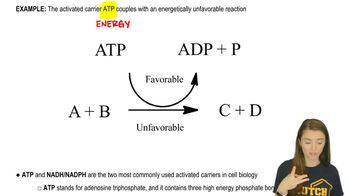Table of contents
- 1. Overview of Cell Biology
- 2. Chemical Components of Cells
- 3. Energy
- 4. DNA, Chromosomes, and Genomes
- 5. DNA to RNA to Protein
- 6. Proteins
- 7. Gene Expression
- 8. Membrane Structure
- 9. Transport Across Membranes
- 10. Anerobic Respiration
- 11. Aerobic Respiration
- 12. Photosynthesis
- 13. Intracellular Protein Transport
- 14. Cell Signaling
- 15. Cytoskeleton and Cell Movement
- 16. Cell Division
- 17. Meiosis and Sexual Reproduction
- 18. Cell Junctions and Tissues
- 19. Stem Cells
- 20. Cancer
- 21. The Immune System
- 22. Techniques in Cell Biology
- The Light Microscope
- Electron Microscopy
- The Use of Radioisotopes
- Cell Culture
- Isolation and Purification of Proteins
- Studying Proteins
- Nucleic Acid Hybridization
- DNA Cloning
- Polymerase Chain Reaction - PCR
- DNA Sequencing
- DNA libraries
- DNA Transfer into Cells
- Tracking Protein Movement
- RNA interference
- Genetic Screens
- Bioinformatics
3. Energy
Activated Carriers
3. Energy
Activated Carriers
Practice this topic
- Multiple Choice
Which of the following is false about activated carriers?
- Multiple Choice
NAD+ becomes NADH through which of the following processes?
- Multiple Choice
Enzymes bind to the transition state of the reactant because they have what?
- Multiple Choice
Which term describes enzyme regulation controlled through binding of a second molecule to a different site on the enzyme?

